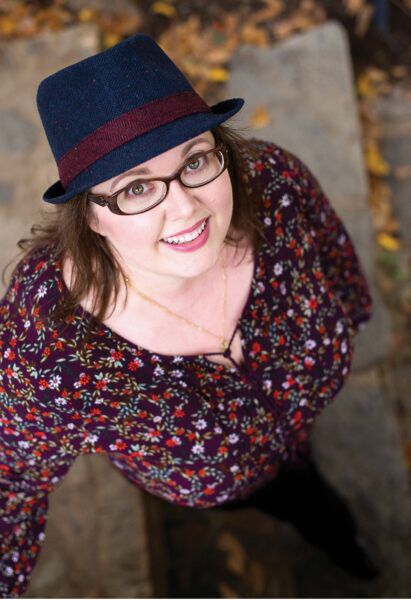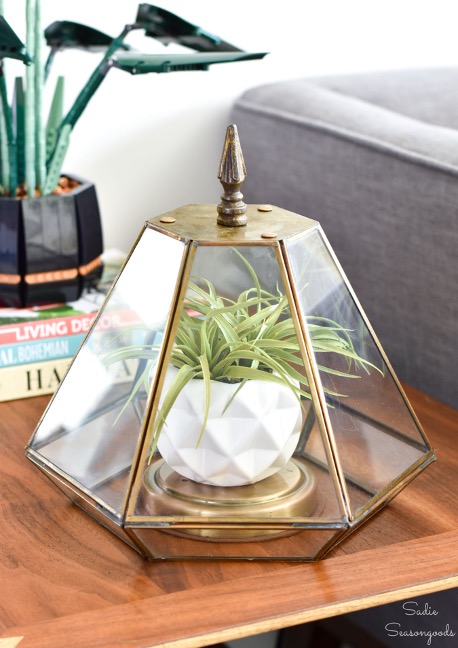#Sadie #Seasongoods #Crafty #Recycler #WorthPoint
WorthPoint’s “Real People, Real Places, Real Fun!” series spotlights fascinating collectors, resellers, dealers, and more in the antiques and collectibles world. Read their stories to discover the who, what, when, where, and why behind what they do!
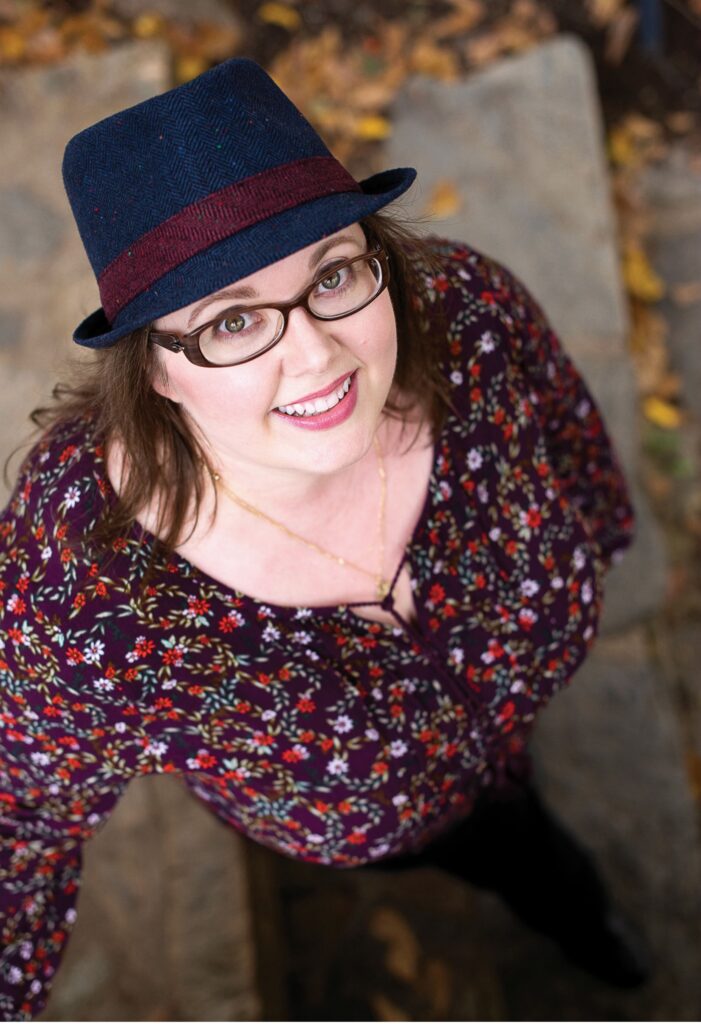
Image credit: Sadie Seasongoods
I like to view my thrifting habit as a rebellion against overconsumption—but if I want to turn my pre-owned purchases into fun and functional home décor, I refer to the talents of Sarah Ramberg or Sadie Seasongoods.
For nearly a decade, the North Carolina self-described “crafty recycler” and “pragmatic tree-hugger” has shown her readers step-by-step how to complete unique projects like making a holiday wreath with a brass trivet or creating a July 4th Liberty Bell decoration from an old glass lampshade. In 2021, she published the book Crafting with Flannel: A Beginner’s Guide to Making Gifts, Accessories & Home Décor.
Stylish Environmentalism
With a website tagline of “Living a firsthand life using secondhand things,” Ramberg practices what she preaches, decorating her home with a refined, eclectic style accented with completed upcycled projects.
“The scavenger hunt for materials at thrift shops and antique stores is oddly alluring,” she said. “You just never know what you’ll find and what will inspire you throughout the process.”
Ramberg’s unique blog moniker combines the first name of her maternal great-grandmother, Sadie, with Seasongood, the last name of her paternal great-grandmother. “I added the extra ‘s’ to the end just because,” she said. “A lot of readers assume it’s my name, and I stopped correcting them a long time ago.”
A Part-Time Hobby Becomes a Full-Time Career
Ramberg’s first project was a tutorial on making an upcycled set of framed doilies that she posted on her personal Facebook page. “I realized that I loved sharing the details with my friends—where I found everything, how I put the pieces together, etc.,” she said. From there, she launched a blog to chronicle her projects; today, it’s a full-time career.
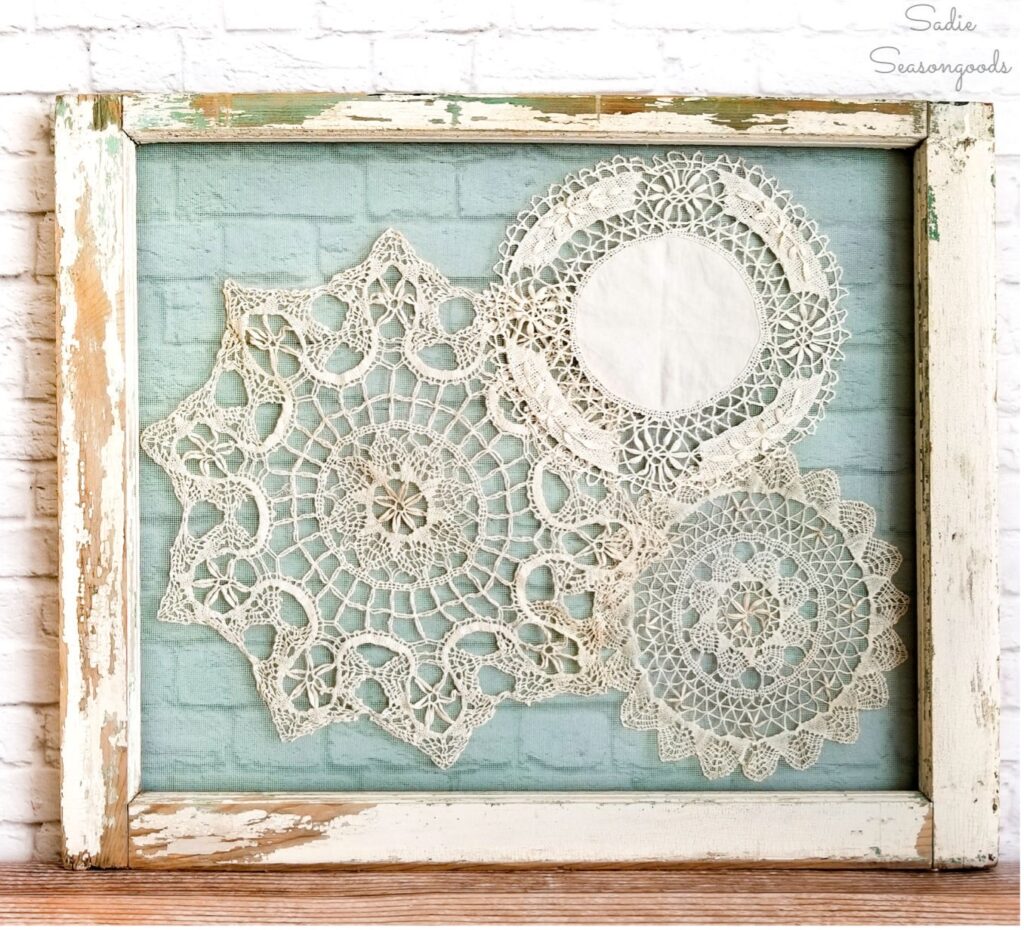
Image credit: Sadie Seasongoods
Recycling Is More Important Than Ever
With climate change and environmental issues in the daily news, upcyclers like Ramberg can’t come soon enough. The public backlash against unabated consumerism has strengthened along with the rumblings from social media through the rise of “de-influencers” who make “anti-haul” reels protesting what they consider unsustainable events like wasteful bachelorette parties and balloon-filled baby gender reveals. They differentiate between needs and wants, putting the kibosh on that $148 Leopard faux fur throw blanket or that $128 beaded tank top. De-influencer @LIVEKINDLY states, “I don’t know who needs to hear this, but clearly not every party, event, club, etc., needs a T-shirt.” and @sadbeige, “That Sad Beige Lady,” says to those entering a store, “Put the cart back. Don’t touch anything. Your home doesn’t need anything else.”
Meanwhile, in that space between the urge to consume and the desire to respect the environment, Ramberg’s inventiveness shines, empowering thrifters to shop confidently and with purpose, knowing we have a Sadie Seasongoods tutorial ready to bring our creative inspiration to fruition.
Now, let’s discover how Sadie Seasongoods engineers her seemingly endless supply of practical crafting magic.
WorthPoint: How far do you usually travel to thrift?
Sarah Ramberg: Most of my thrifting is local in the Charlotte, North Carolina, area. As time permits, I occasionally take day trips to other North Carolina spots (Asheville, Greensboro, Hickory) for a little thrifting and antiquing. But I’ve also gone on lots of blog-specific trips (in seven states so far!) to not only thrift for my business and our home but to also create thrift itineraries on my website. I’ve got thrifting itineraries for several cities in North Carolina, of course, but also in South Carolina, Georgia, Tennessee, Virginia, Kentucky, and Florida, as well. My husband joins me on the longer trips that require a night or two in a hotel. We always seek out mid-century modern stores, thrift shops, and other antique stores for the travel blog posts. But when he’s with me, we also fit in some breweries, hobby shops, bookstores, and wineries.
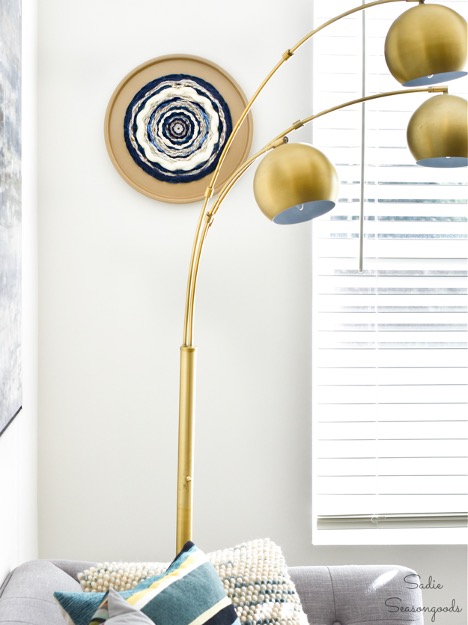
Image credit: Sadie Seasongoods
WP: What is your process? Do you have a project idea and then get the stuff to complete it, or is it the other way around?
SR: It really happens both ways! Sometimes, I’ve seen something at a higher-end store or on a website that I want to recreate via upcycling. So, that means my thrifting process is far more focused. But other times, I see something on a thrift store shelf and am immediately inspired—and that’s a magical feeling.
WP: What material is your favorite to craft with?
SR: I like to bounce around from material to material. Hopefully, doing so keeps things interesting for my readers, which is something I take seriously! I love working with wooden objects because there’s so much to do with them—paint, stain, adding hardware, stenciling, etc. But I wrote a book about flannel crafts, so I love working with fabric, too! Clear glass (bottles, vases, jars) is another favorite medium. Not only is there an endless supply on thrift store shelves, but glass recycling is disappearing in our communities.
WP: How do you brainstorm your ideas?
SR: As much as I love to upcycle something unusual or special from a thrift store, I actually prefer crafting with something common or easy to find. That way, a reader can replicate the project idea or put their own spin on it because the original item is in their recycle bin, an old cupboard, or commonly spotted at thrift stores. And as a business owner, I try to view the value of my website through a reader’s eyes. Upcycling unusual or rare items is certainly cool, but readers tend to connect more significantly with projects that they can easily apply in their own lives.
WP: What types of thrifted décor trends do you see in 2024?
SR: I think we’ll continue to see a lot of clothing upcycles (i.e., creating one-of-a-kind fashion with secondhand clothes) and recycle bin crafts (upcycling with cardboard, glass bottles, etc.) as people continue to feel the pinch of inflation. I think botanical influences will continue, as well. The best part about upcycling is that you can tailor your projects to whatever your favorite décor style is, whether it’s currently trendy or not.
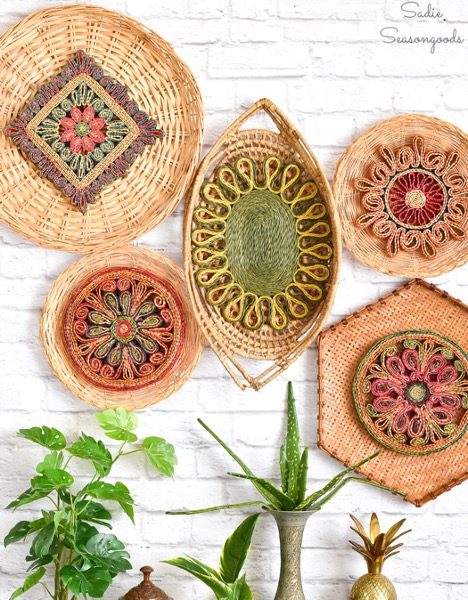
Image credit: Sadie Seasongoods
WP: How would you respond to those who can’t see the point of buying used?
SR: There is always a time and a place for buying new things. But for anyone who is less inclined to live a cookie-cutter life, upcycling (and secondhand shopping) is still the surest bet for finding unique furnishings and clothing. And for someone who is more eco-conscious, the carbon footprint of ‘buying new’ is astronomical, at least if it was manufactured in and shipped from overseas. There are consequences to buying mass-produced items at big box stores, from pollution to cheap materials to concerns about working conditions for employees. But because those consequences are far away, it’s easy to forget or ignore them.
WP: Is there anything else readers should know about your business?
SR: Connecting with people who also love thrifting, antiquing, and upcycling brings me unending joy, and I hope my website brings the same amount of value and inspiration to them. I’m quite active on Facebook and Instagram, and Pinterest is a great way to keep up with my projects.
Between excursions to hunt for antiques and vintage décor, Lynda Houston is busy restoring her 1950s cottage in Cincinnati, Ohio. She and her partner Dave Beck operate TheRustInPeaceShop on Etsy.
WorthPoint—Discover. Value. Preserve.

